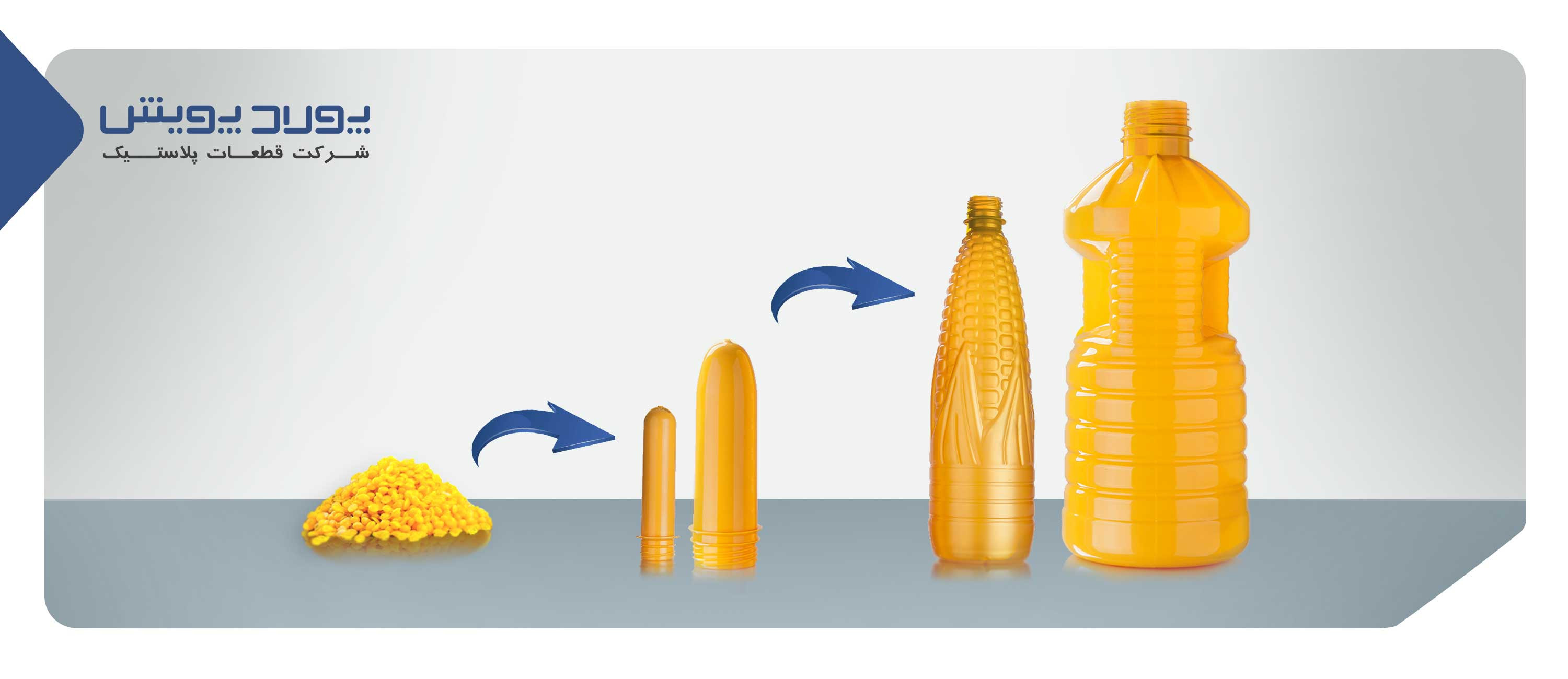-
 What is preform? How is a PET bottle produced?
What is preform? How is a PET bottle produced? -
 What is preform? How is a PET bottle produced?
What is preform? How is a PET bottle produced? -
 What is preform? How is a PET bottle produced?
What is preform? How is a PET bottle produced?
Update date
2023-04-19 12:43:37

Today, the production of plastic bottles is widely used due to its resistance to breakage, low weight and cheapness compared to other packaging materials such as glass and metal. Polyethylene terephthalate (PET) is one of these plastics.
PET is abbreviation of Poly Ethylene Terephthalate, a compound that is chemically considered part of the polyester family. Polyesters were developed in the 1930s for using as synthetic fibers for the first time.
Many of them, including PET, are still used to produce fibers. Then PET was used in packaging films and in 1970, the bottle production process was developed.
The special physical and chemical properties of PET such as high mechanical strength, transparency, light weight, its safety in terms of toxicity and its relative impermeability to gases, no effect on taste and stability against heat have caused this polymer to be used in making bottles and Food packaging films.
The method of shaping plastics is diverse and varies according to the type of polymer and its application.
Today, plastics such as polyvinyl chloride (PVC), polyethylene (PE), polypropylene (PP), polycarbonate (PC) and polyethylene terephthalate (PET) are used to make bottles.
The production of the bottle from the four mentioned plastics is done by the process of melt extrusion and blowing the polymer in the mold. (Actually, there is no need to produce preform) but since PET does not have the necessary strength in the molten state, the PET bottle production process includes two stages:
First step: the amorphous PET preform is produced by injecting crystalline molten PET into the mold.
The second stage: the produced preforms are molded and blown.

The process of producing bottles from PET materials is carried out in two ways: single stage and two stage:
In the single-step method, the preform and bottle production process is done in one machine, while in the two-step process, the preform (injection molding machine) and bottle production machines are different from each other, and the bottles are produced in separate processes:
The preforms produced in the injection process, before blowing, are heated again in the oven and transferred to the blowing mold.
Linear and rotary blow-pull machines have been developed for this purpose.
Stretch-blow molding is the most common method of preform bottle production. The most important advantage of this method is the ability to stretch the preform in both cross-sectional and axial directions. The simultaneous stretching of the polymer from two directions increases the tensile strength, barrier properties, impactability, transparency and strength of the container.
The formation of the bottle in the mold is done in three stages:
The first stage begins with the vertical stretching of the preform in the middle of a rod, then the stretched preform is inflated by blowing low pressure air (0.5 to 0.9 MPa) and the elongation also increases. In the last stage, the tension is stopped by the rod and the pressure increases up to 40 bar (MPa4). The first and second stages are low blow and the last stage are called blowing (of course, these three stages are not distinguished in the industry). To prevent the tension rod from hitting the preform, usually the second stage or is the same as the first stage of tension.
Changing the shape of the preform and shaping the bottle should be accompanied by maintaining the transparency of the bottle, the uniform distribution of thickness and its optimal mechanical performance (according to the specific characteristics of the liquid in which it is filled).
Despite the limitations in barrier properties and mechanical resistance, crystalline PET is widely used.
PET is generally produced by stepwise polymerization and from the reaction between pure terephthalic acid and mono Ethylene glycol. The final product of polymerization can be amorphous (transparent) or semi-crystalline (matte), and each product will have a specific application in the industry.


















